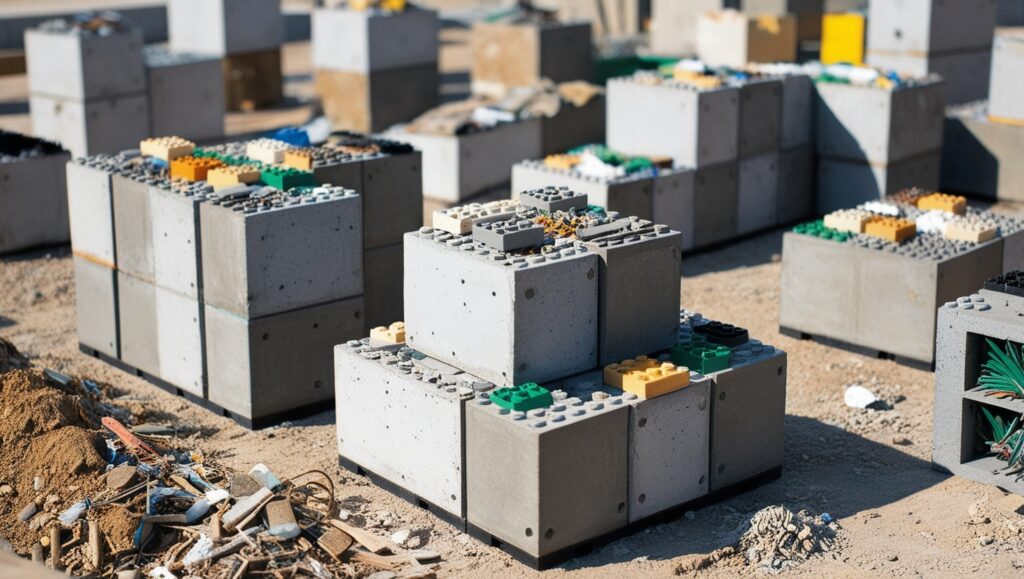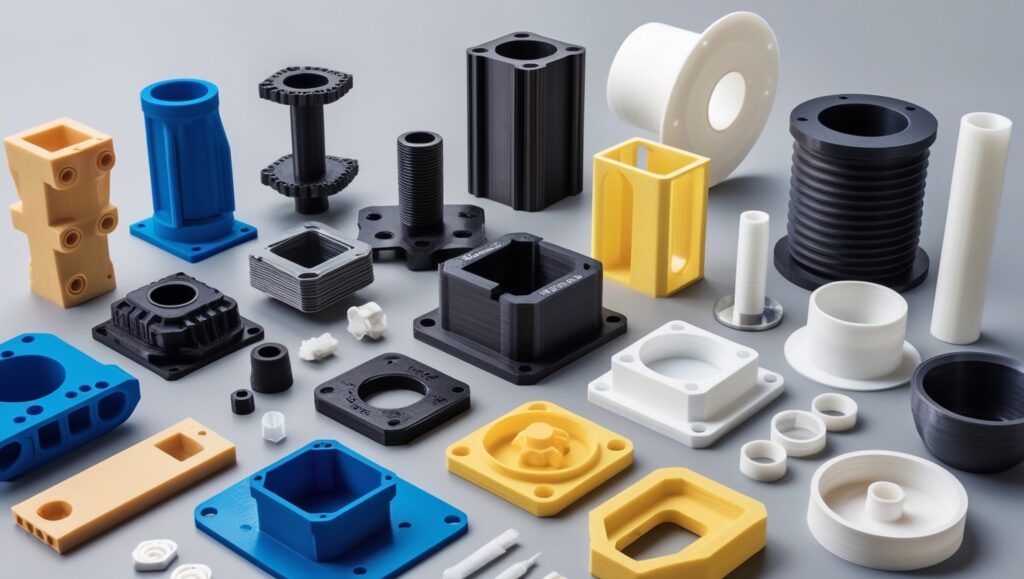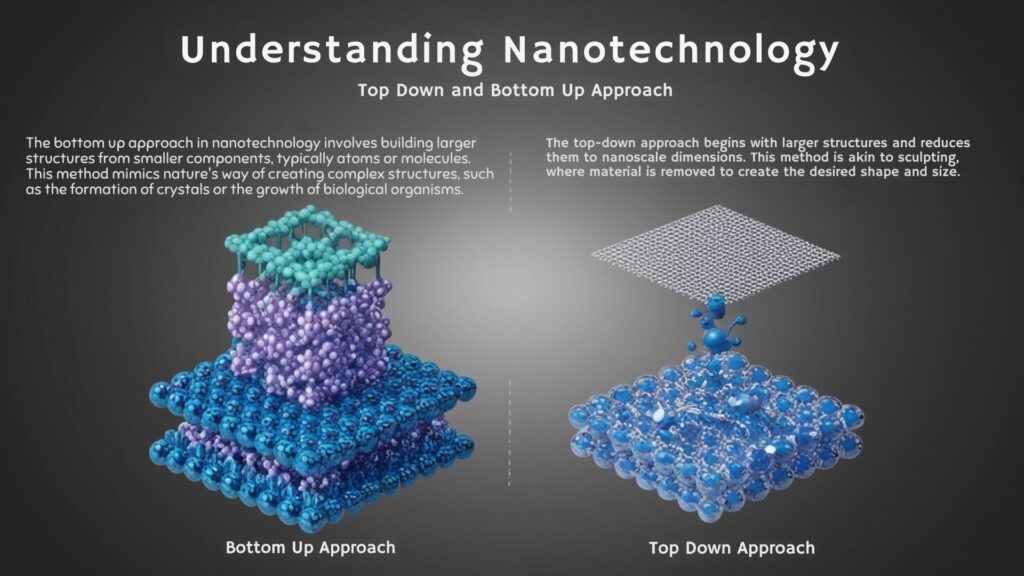Vertical farming is not a new concept, but recent technological advancements have made it more viable and efficient. This method leverages technology to grow crops indoors, often in skyscrapers, warehouses, or shipping containers, using vertically stacked trays to maximize space. The controlled environment agriculture (CEA) model underpins vertical farming, utilizing advanced technologies like artificial intelligence (AI), machine learning (ML), and the Internet of Things (IoT) to monitor and tailor growing conditions to the crops’ needs.
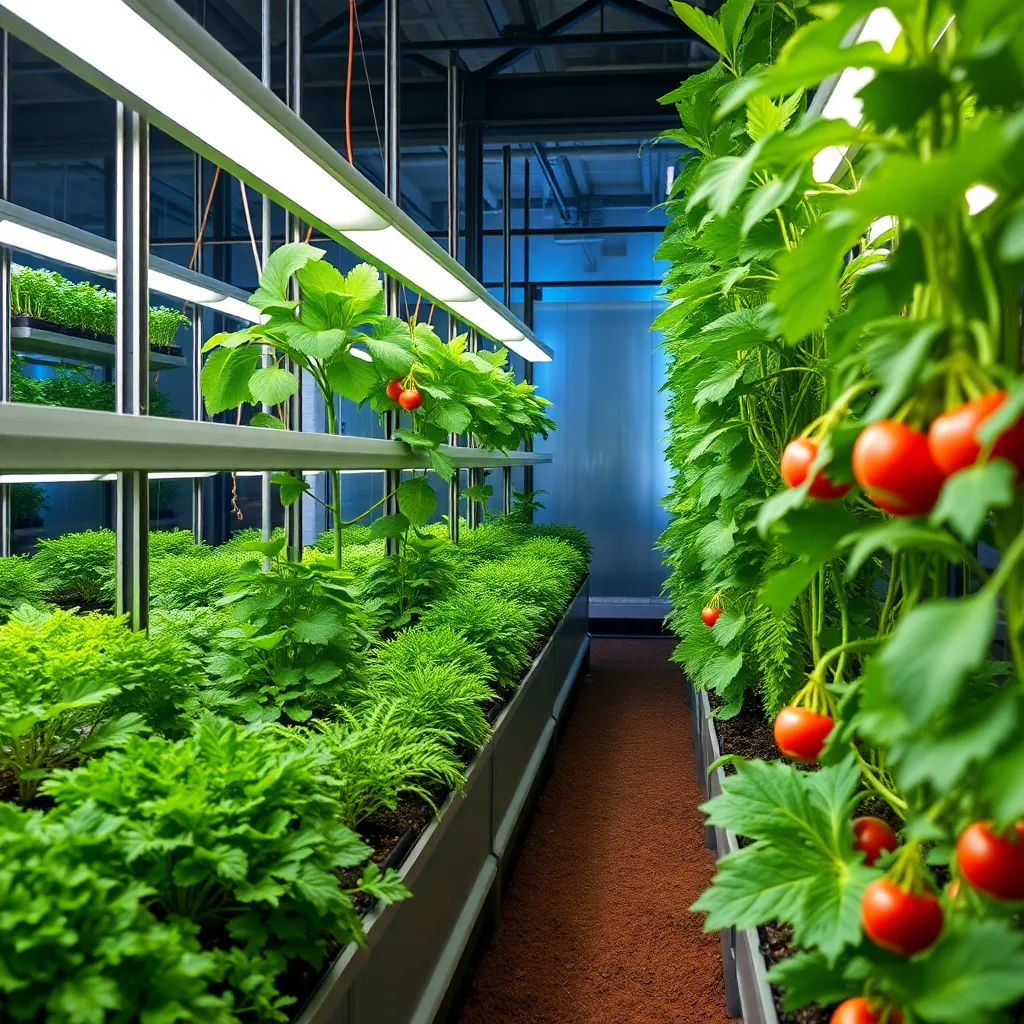
The global community is facing mounting challenges to food security, particularly with the projected population reaching 10 billion by 2050. Traditional agricultural practices are increasingly constrained by issues such as land scarcity, water depletion, and environmental degradation, which are exacerbated by climate change. Vertical farming offers an innovative solution to these limitations, whereby crops are cultivated in vertically stacked layers within controlled environments, optimizing the use of space and resources.
AI plays a crucial role in the success of vertical farming by analyzing data from sensors and cameras to adjust growing conditions in real-time. For example, AI can modify lighting spectrums and intensities according to the plant’s growth stage, regulate temperature and humidity to prevent diseases, and even predict crop yields and optimize harvesting processes. Swegreen, a Swedish vertical farming firm, exemplifies this innovation by using IoT sensors and a digitalized control platform to manage and optimize crop growth through AI-based cloud systems.
This high-tech approach to agriculture represents a significant shift from traditional methods, addressing sustainability challenges and creating opportunities for autonomous in-store platforms where supermarkets and restaurants can produce their own fresh produce. As vertical farming continues to evolve, it holds the potential to reshape food production and ensure food security in the face of growing global demands.
Definition of Vertical Farming
Vertical farming is an innovative agricultural technique that involves growing crops in vertically and horizontally stacked layers, often in indoor environments like skyscrapers, warehouses, shipping containers, and greenhouses. This method leverages controlled-environment agriculture to optimize plant growth and frequently employs soilless farming techniques such as hydroponics, aquaponics, and aeroponics. Unlike traditional farming, vertical farming does not rely on fertile soil or favorable weather conditions, allowing for consistent crop production year-round through the use of artificial lighting and temperature control.
The approach maximizes space efficiency, enabling a single vertical farm to yield significantly more produce than conventional farms of the same footprint. By producing food in enclosed conditions, vertical farming eliminates the need for pesticides and reduces the risk of pests and diseases, contributing to cleaner and potentially safer produce. This technique presents a promising solution to the challenges posed by a growing global population and the environmental impacts of traditional agriculture, such as climate change, deforestation, and soil degradation.
History of Vertical Farming
The concept of vertical farming has a rich history that surprisingly dates back to ancient times, extending through the 1900s. The earliest forms of vertical farming can be traced to the Hanging Gardens of Babylon and the Aztec’s “Chinampas,” which are considered early shadow types of vertical farming. The modern term “vertical farming” was coined by Gilbert Ellis in the 1900s, although it took its true form in Armenia in 1951. The concept as it is known today was articulated by Dickson Despommier in 1991.
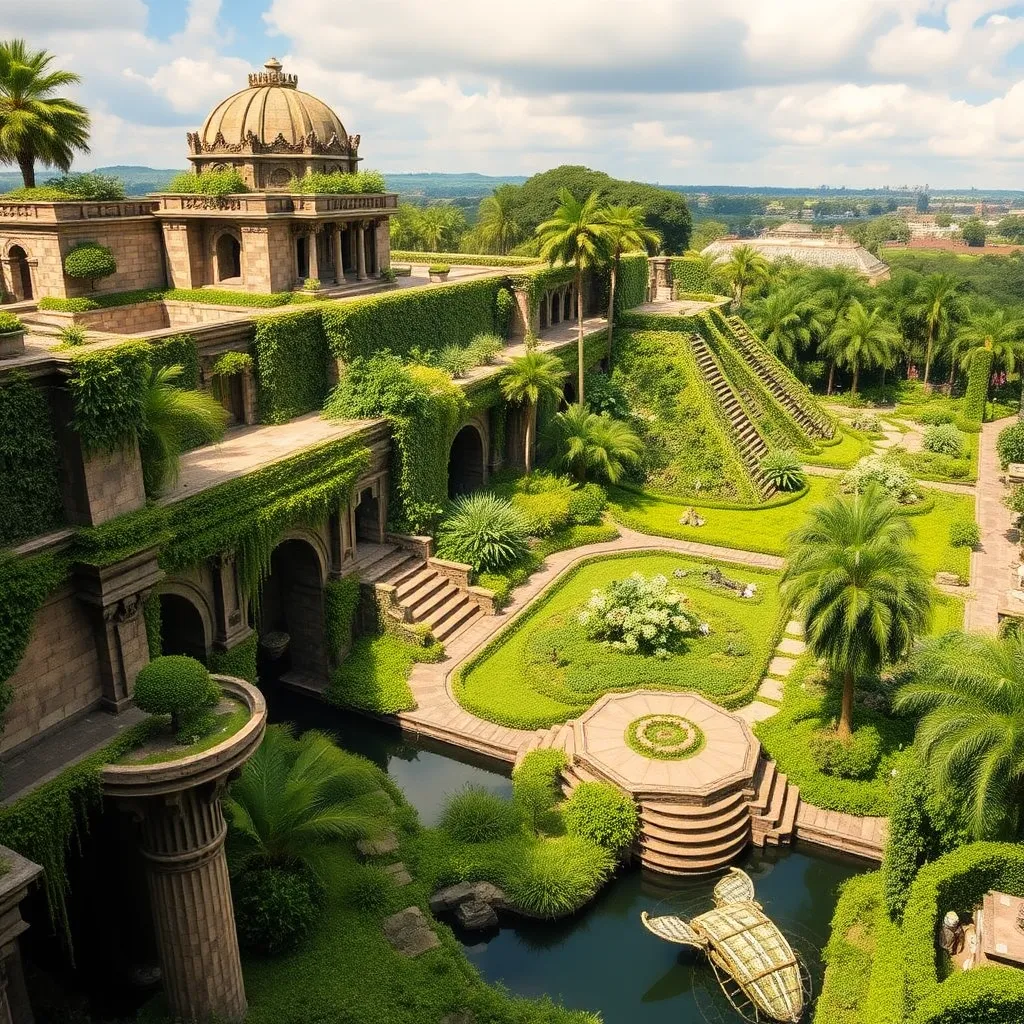
Despite ongoing skepticism about vertical farming’s potential to sustain a growing global population, historical instances demonstrate humanity’s ability to create breakthroughs in response to limitations. This history may hold the key to the missing piece needed for vertical farming to take off globally.
Comparison of Techniques
Vertical farming leverages various soilless growing techniques, primarily hydroponics, aeroponics, and aquaponics, each offering unique benefits and challenges in terms of crop yields and resource efficiency.
Hydroponics involves growing plants without soil, using inert mediums such as perlite, gravel, or clay pellets. The plant roots are submerged in a nutrient-rich solution, providing precise nutrient control and water efficiency. This method is known for its ability to produce significant amounts of food in small spaces, making it popular among mainstream growers. Hydroponic systems, utilizing techniques like the nutrient film technique (NFT) and deep water culture (DWC), allow for year-round growing and effective pest and disease management. However, they require a substantial amount of water and maintenance to keep the system running smoothly.
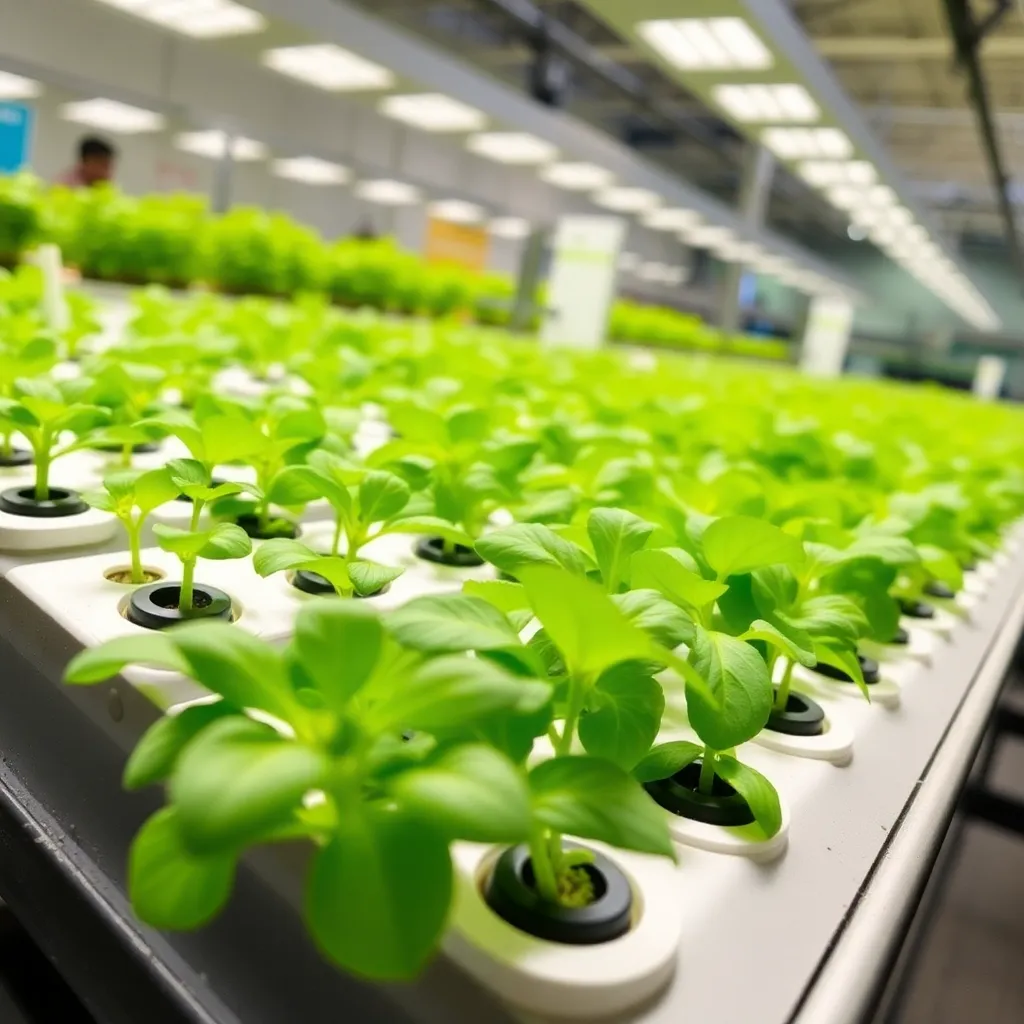
Aeroponics, on the other hand, suspends plant roots in the air and regularly sprays them with a nutrient solution. This method uses less water and can result in better crop yields compared to hydroponics, but it tends to be more complex and costly to set up and maintain. Aeroponics is considered the cleanest of the three methods and is highly efficient in terms of space usage. It also provides an environment that can potentially enhance plant growth due to better oxygenation of the roots.
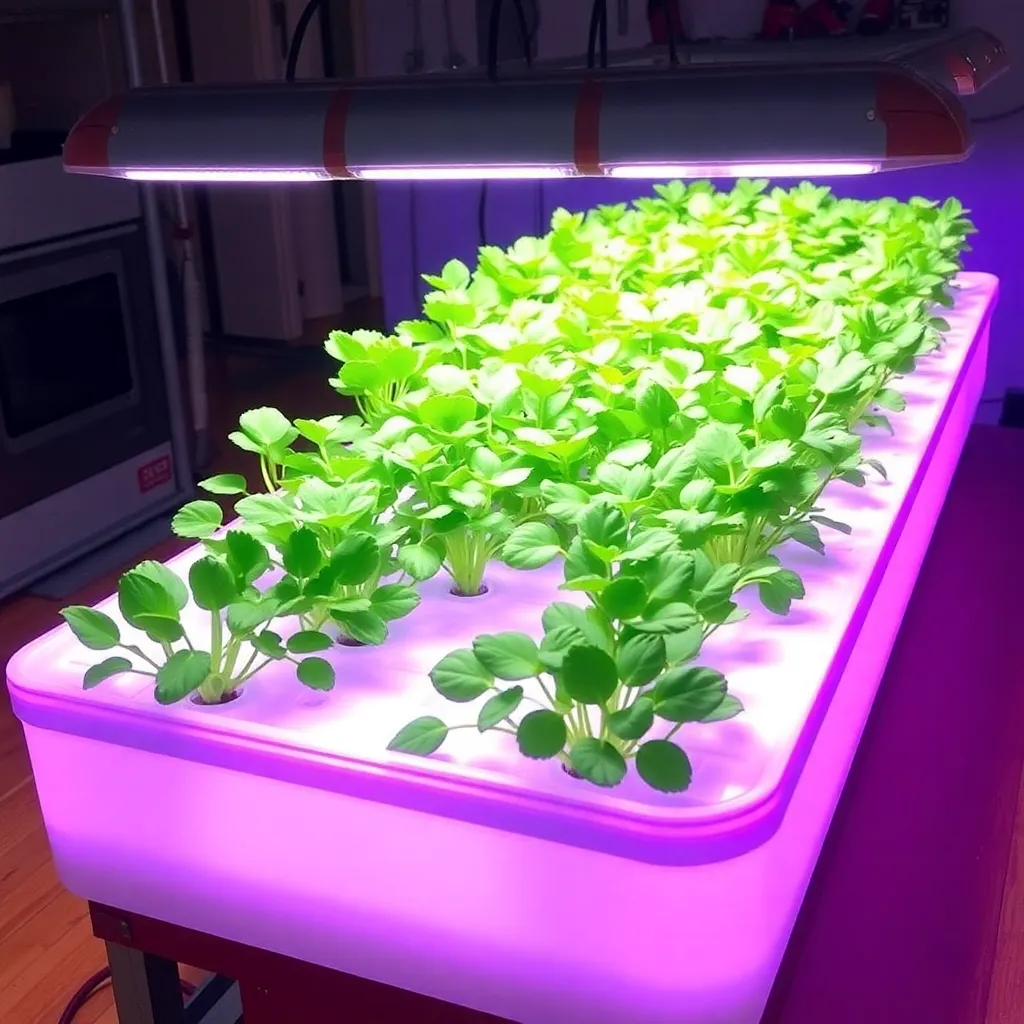
Aquaponics combines hydroponics with aquaculture, raising fish and plants together in a symbiotic environment. The fish waste provides an organic nutrient source for the plants, while the plants help filter and clean the water for the fish. This method is resource-efficient and sustainable but requires more effort and expertise to balance the aquatic ecosystem. It also offers the benefit of producing both plant and fish harvests, adding an extra dimension to its productivity.
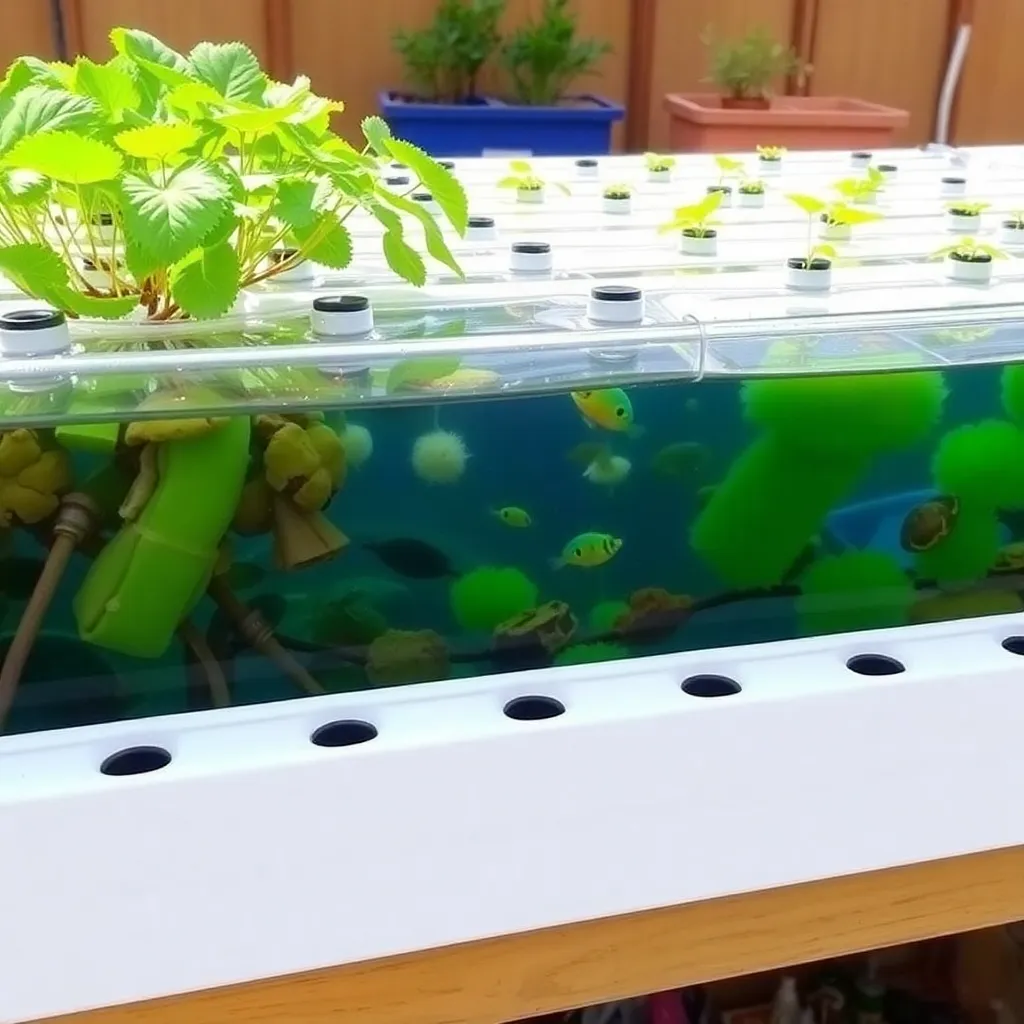
Challenges
Integrating AI in Vertical Farming
The integration of AI in vertical farming has the potential to revolutionize the agricultural sector by addressing some of its most pressing challenges. Vertical farming, a modern method where crops are grown in vertically stacked layers within controlled environments, optimizes space and resource usage. This innovative approach is particularly crucial as the global community faces increasing food security challenges, driven by a projected population of 10 billion by 2050, alongside constraints such as land scarcity, water depletion, and environmental degradation.
AI technologies play a pivotal role in enhancing the efficiency and sustainability of vertical farming. These technologies are applied in various aspects of farming, such as plant health detection, weeding, livestock management, greenhouse management, and advanced weather condition analysis. The synergy between AI and vertical farming extends beyond mere crop cultivation. AI-driven solutions enable these farms to optimize plant growth and generate vast amounts of data, which in turn helps refine the entire process, making food production more efficient, sustainable, and scalable.
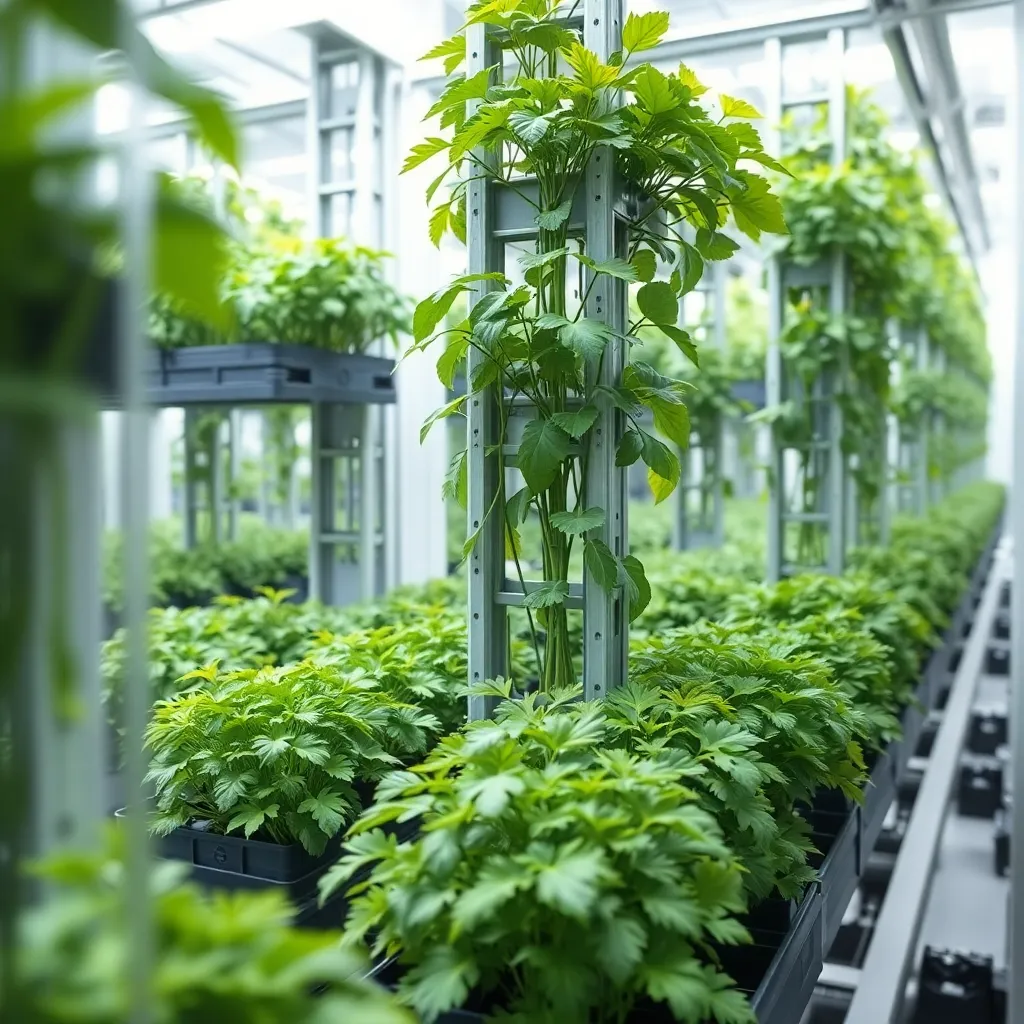
Moreover, AI addresses the variability and unpredictability inherent in biological processes by analyzing extensive data sets and using machine learning algorithms to predict and mitigate potential issues. These measures ensure the accuracy and reliability of AI-driven decisions, enhancing the overall effectiveness of vertical farming operations. Thus, the integration of AI in vertical farming not only innovates precision farming and livestock management but also supports sustainable farming practices, contributing significantly to the future of agriculture.
Difficulties in AI Vertical Farming Implementation
The burgeoning global population and the increasing demand for food have propelled the development of innovative agricultural solutions, such as vertical farming. This controlled environment agriculture (CEA) technique offers significant potential to address these challenges by maximizing yield and minimizing resource consumption. Vertical farming involves growing crops in vertically stacked layers, utilizing artificial lighting, climate control, and nutrient-rich solutions.
Artificial intelligence (AI) has emerged as a powerful tool in advancing the practice of sustainable vertical farming. By leveraging machine learning algorithms, computer vision systems, and sensors connected through the Internet of Things (IoT), AI empowers farmers to optimize resource utilization, automate tasks, and make data-driven decisions.
However, the integration of AI into vertical farming operations is not without challenges. One of the primary difficulties is the high initial cost of implementing AI technologies, which can be prohibitive for small-scale farmers and startups. Additionally, there is a steep learning curve associated with understanding and effectively utilizing AI systems, which often necessitates specialized knowledge and training.
Another significant challenge lies in the complexity of data management and analysis. Vertical farms generate vast amounts of data from various sensors and devices, requiring robust data processing and storage solutions. Ensuring data accuracy and consistency is crucial for the reliability of AI-driven decisions, yet it can be difficult to achieve given the dynamic nature of agricultural environments.
Moreover, the integration of AI in vertical farming also faces the issue of technological interoperability. Different AI tools and systems may not always seamlessly work together, leading to inefficiencies and potential disruptions in farm operations. Addressing these challenges requires ongoing research, development, and collaboration between technology providers and agricultural experts to create more accessible and user-friendly AI solutions for vertical farming.
AI Technologies in Vertical Farming
Key AI Technologies
Artificial Intelligence (AI) has become a cornerstone in optimizing vertical farming operations, driving efficiency, sustainability, and productivity. Several key AI technologies have been identified as particularly beneficial in enhancing the performance of vertical farms.
One of the most critical AI technologies is the implementation of AI-powered sensing systems. These systems utilize sensors and actuators to monitor and control the growing environment, ensuring optimal conditions for crop growth. Nutrient-sensing systems are integral, providing precise data on the nutrient levels in the soil or hydroponic solutions, allowing for accurate adjustments to ensure plants receive the ideal nutrient mix. Additionally, plant monitoring and control systems continuously track the health and growth of plants, enabling timely interventions to prevent issues such as disease or pest infestations.
Automated and robotic vertical farming systems represent another significant AI application. Automated systems manage tasks such as planting, watering, and harvesting with minimal human intervention, significantly reducing labor costs and increasing consistency in crop production. Robotic systems, including the use of drones, further enhance operational efficiency by performing tasks such as pollination, inspection, and transportation of crops within the vertical farm environment.
AI-based research trends are also shaping the future of vertical farming. Advanced AI algorithms analyze vast amounts of data collected from sensors and other monitoring systems to identify patterns and predict outcomes. This predictive capability enables farmers to make informed decisions about crop management, leading to improved yields and reduced resource consumption.
AI technologies are transforming vertical farming into a highly efficient and sustainable method of food production. By leveraging AI-powered solutions, vertical farms can optimize their operations, enhance crop yields, and contribute to addressing the global challenges of food security and resource scarcity.
AI Applications in Optimizing Growth Conditions and Predicting Yields
Vertical farming is undergoing a significant transformation with the integration of artificial intelligence (AI), offering promising solutions to the challenges faced by traditional agriculture. AI technologies are being leveraged to optimize growth conditions and predict yields, making food production more efficient, sustainable, and scalable.
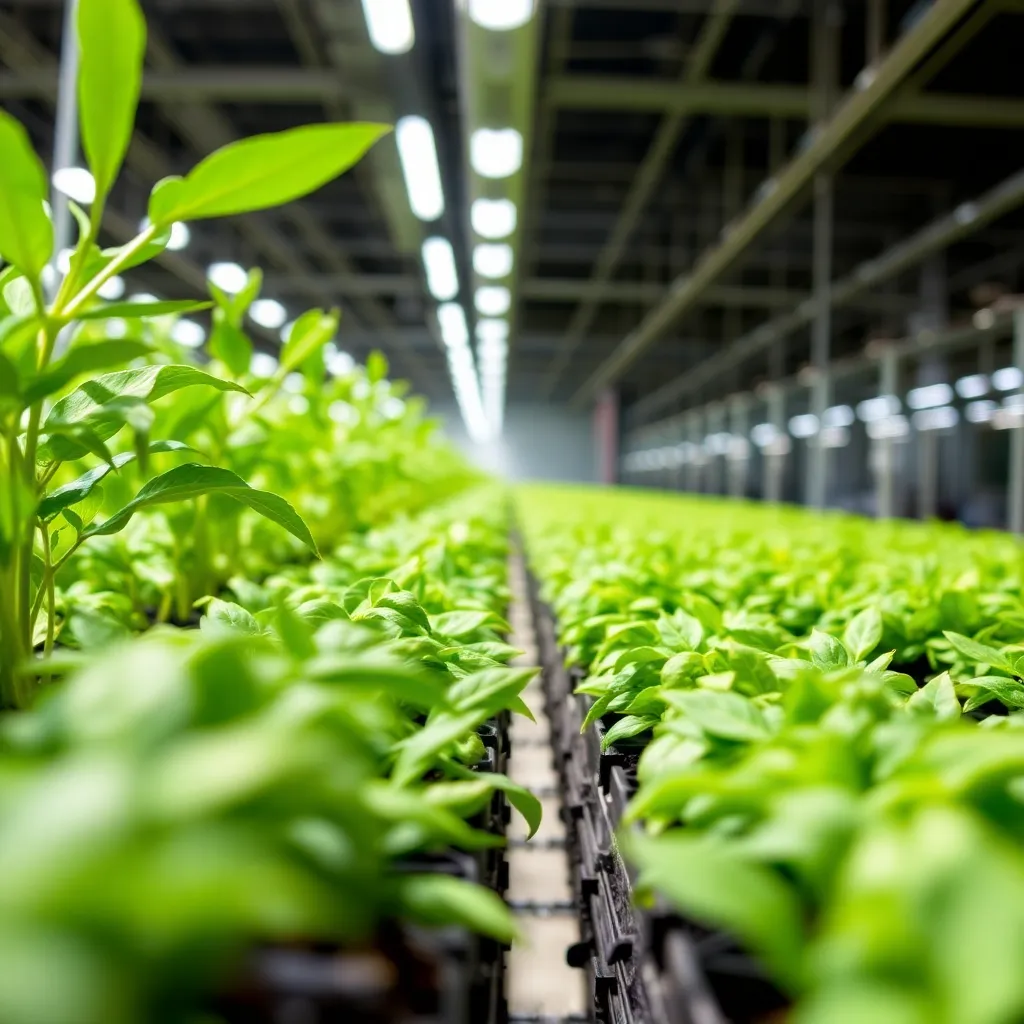
One of the key AI technologies implemented in vertical farming is machine learning algorithms. These algorithms analyze historical data, environmental variables, and cultivation practices to accurately forecast future yields. This predictive capability aids farmers in planning and resource allocation, ensuring optimal production levels to meet the demands of a growing population.
In addition to yield prediction, AI also enhances real-time monitoring of crop health. For instance, computer vision models are used to detect and classify nutrient deficiencies and diseases in plants. By identifying these issues promptly, vertical farmers can make necessary interventions, optimizing nutrient delivery and reducing crop loss, thereby improving overall crop health and quality.
Moreover, AI-powered sensing technologies play a crucial role in vertical farming. Sensors and actuators collect data on various environmental parameters such as temperature, humidity, and light. This data is then processed by AI systems to maintain ideal growth conditions for plants, ensuring consistent and high-quality yields. Unmanned vertical farming systems, including automated and robotic systems, further enhance the efficiency and scalability of these operations.
Environmental Impact
Efficient Resource Utilization
The implementation of artificial intelligence (AI) in vertical farming significantly enhances the efficient use of resources such as water and nutrients. By optimizing light, temperature, and nutrient supply, AI-driven vertical farming systems can achieve greater resource efficiency compared to traditional farming methods. These systems continuously refine cultivation practices, reducing water, energy, and nutrient use.
Vertical farming leverages controlled environment agriculture (CEA) technology to maximize crop yield in vertically stacked layers, making efficient use of space and resources. This approach not only increases crop production in urban areas, thus reducing the need for long-distance transportation, but also mitigates the environmental impact commonly associated with traditional farming methods, such as land scarcity, water depletion, and environmental degradation.
In vertical farms, energy-efficient LEDs are used to create the optimal spectral range for photosynthesis, which helps in reducing energy consumption. Moreover, the precise calibration of nutrient solutions in hydroponic systems ensures that plants receive the exact amount of nutrients needed, minimizing waste and promoting sustainable practices. The continuous data collection and analysis facilitated by AI further allow for the refinement of these processes, making food production more scalable and sustainable.
By addressing the limitations of traditional agriculture and optimizing resource use, AI-integrated vertical farming presents a promising solution for sustainable and efficient food production in the face of a growing global population and increasing environmental challenges.
Carbon Footprint Reduction
AI integration in vertical farming significantly contributes to reducing the carbon footprint compared to traditional farming methods. Traditional agriculture requires vast amounts of land, which often leads to deforestation and loss of natural habitats. In contrast, vertical farming maximizes space by growing crops in vertically stacked layers, typically within controlled environments like indoor spaces or repurposed buildings, thereby reducing the need for extensive land use.
Energy-efficient technologies play a crucial role in these indoor farms. For instance, LED lighting systems are optimized to emit light in the spectral range most beneficial for photosynthesis, significantly improving energy efficiency compared to conventional farming lighting systems. Additionally, AI systems manage and optimize these lighting systems to ensure they use the least amount of energy necessary, further lowering energy consumption and greenhouse gas emissions.
Furthermore, AI-driven systems in vertical farms facilitate precise control over environmental variables, such as temperature, humidity, and nutrient supply. This level of control minimizes resource wastage, leading to more efficient use of water and fertilizers. For example, AI algorithms can predict the exact amount of water needed for each crop, thereby preventing over-irrigation and reducing water waste.
AI’s ability to analyze vast amounts of data from vertical farming operations also contributes to carbon footprint reduction. By continuously monitoring and adjusting the growing conditions, AI ensures that resources are used optimally, reducing the overall energy and resource footprint of these farming practices. This integration of AI and data analytics makes vertical farming not only more efficient but also more sustainable and environmentally friendly.
Efficiency and Yield Improvement
The world’s population is booming, and the demand for food is growing. Conventional farming methods are straining under this pressure, facing challenges like land scarcity, water depletion, and climate change. This is where vertical farming steps in, a revolutionary approach that leverages technology to cultivate crops in vertically stacked layers indoors.
For the first time in the 12,000-year history of agriculture, societies don’t need to have fertile soil or favorable weather conditions to grow what they want. Crops can be grown on trays stacked to the ceilings of 100-acre structures — with the assistance of temperature and light-controlling technology, automation, and even agricultural robots — in a process called vertical farming. Vertical farming usually takes place in skyscrapers, warehouses, shipping containers, greenhouses, or other indoor facilities.
Agriculture is a cornerstone of human civilization, yet this age-old industry faces many challenges that hamper productivity, impact livelihoods, and threaten global food security. By 2050, we must produce 60 percent more food to feed a world population of 9.3 billion, according to the Food and Agriculture Organization. Given the current industry challenges, achieving this with a traditional farming approach could be tricky and would extend the heavy toll we already place on our natural resources.
This is where Artificial Intelligence can come to the rescue. The AI in Agriculture Market is projected to grow from $1.7 billion in 2023 to $4.7 billion by 2028, highlighting the pivotal role of advanced technologies in this sector. AI technologies are being utilized to improve the efficiency and yield of vertical farming operations significantly. Temperature and light-controlling technology, along with automation and agricultural robots, are critical in creating the ideal environment for plant growth in vertical farming setups. These advanced technologies not only help in optimizing resource use but also enhance the overall productivity and sustainability of farming practices.
